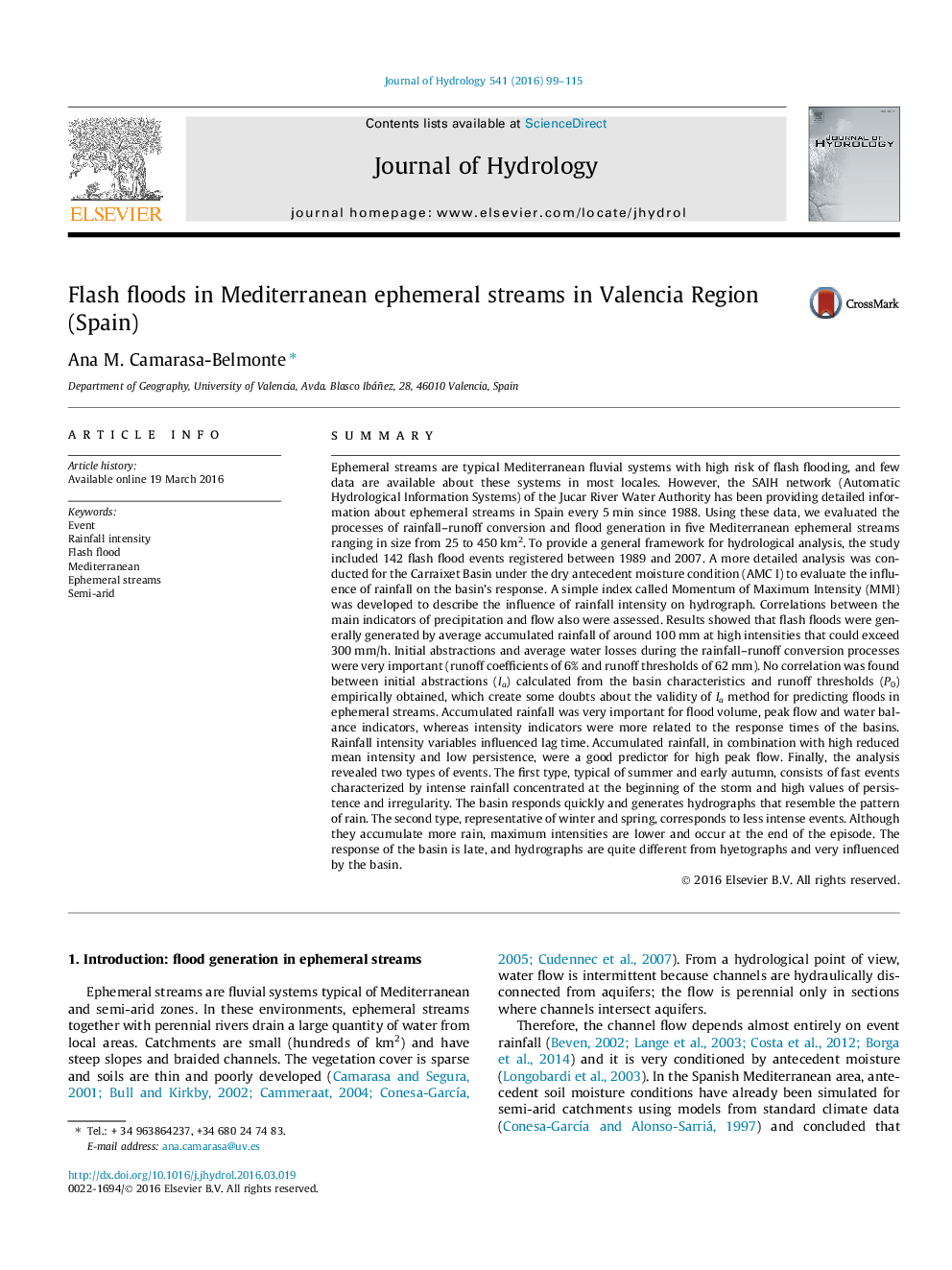| کد مقاله | کد نشریه | سال انتشار | مقاله انگلیسی | نسخه تمام متن |
|---|---|---|---|---|
| 6409360 | 1332869 | 2016 | 17 صفحه PDF | دانلود رایگان |
- We study flash floods generation in Mediterranean ephemeral streams from 142 events.
- The influence of rainfall structure in the hydrograph has been assessed under AMC I.
- Two types of event have been found according the moment of higher rain intensity.
- Accumulated rainfall was important for water balance and flow indicators.
- Rainfall intensity parameters showed good correlation to the basin response times.
SummaryEphemeral streams are typical Mediterranean fluvial systems with high risk of flash flooding, and few data are available about these systems in most locales. However, the SAIH network (Automatic Hydrological Information Systems) of the Jucar River Water Authority has been providing detailed information about ephemeral streams in Spain every 5Â min since 1988. Using these data, we evaluated the processes of rainfall-runoff conversion and flood generation in five Mediterranean ephemeral streams ranging in size from 25 to 450Â km2. To provide a general framework for hydrological analysis, the study included 142 flash flood events registered between 1989 and 2007. A more detailed analysis was conducted for the Carraixet Basin under the dry antecedent moisture condition (AMC I) to evaluate the influence of rainfall on the basin's response. A simple index called Momentum of Maximum Intensity (MMI) was developed to describe the influence of rainfall intensity on hydrograph. Correlations between the main indicators of precipitation and flow also were assessed. Results showed that flash floods were generally generated by average accumulated rainfall of around 100Â mm at high intensities that could exceed 300Â mm/h. Initial abstractions and average water losses during the rainfall-runoff conversion processes were very important (runoff coefficients of 6% and runoff thresholds of 62Â mm). No correlation was found between initial abstractions (Ia) calculated from the basin characteristics and runoff thresholds (P0) empirically obtained, which create some doubts about the validity of Ia method for predicting floods in ephemeral streams. Accumulated rainfall was very important for flood volume, peak flow and water balance indicators, whereas intensity indicators were more related to the response times of the basins. Rainfall intensity variables influenced lag time. Accumulated rainfall, in combination with high reduced mean intensity and low persistence, were a good predictor for high peak flow. Finally, the analysis revealed two types of events. The first type, typical of summer and early autumn, consists of fast events characterized by intense rainfall concentrated at the beginning of the storm and high values of persistence and irregularity. The basin responds quickly and generates hydrographs that resemble the pattern of rain. The second type, representative of winter and spring, corresponds to less intense events. Although they accumulate more rain, maximum intensities are lower and occur at the end of the episode. The response of the basin is late, and hydrographs are quite different from hyetographs and very influenced by the basin.
Journal: Journal of Hydrology - Volume 541, Part A, October 2016, Pages 99-115
